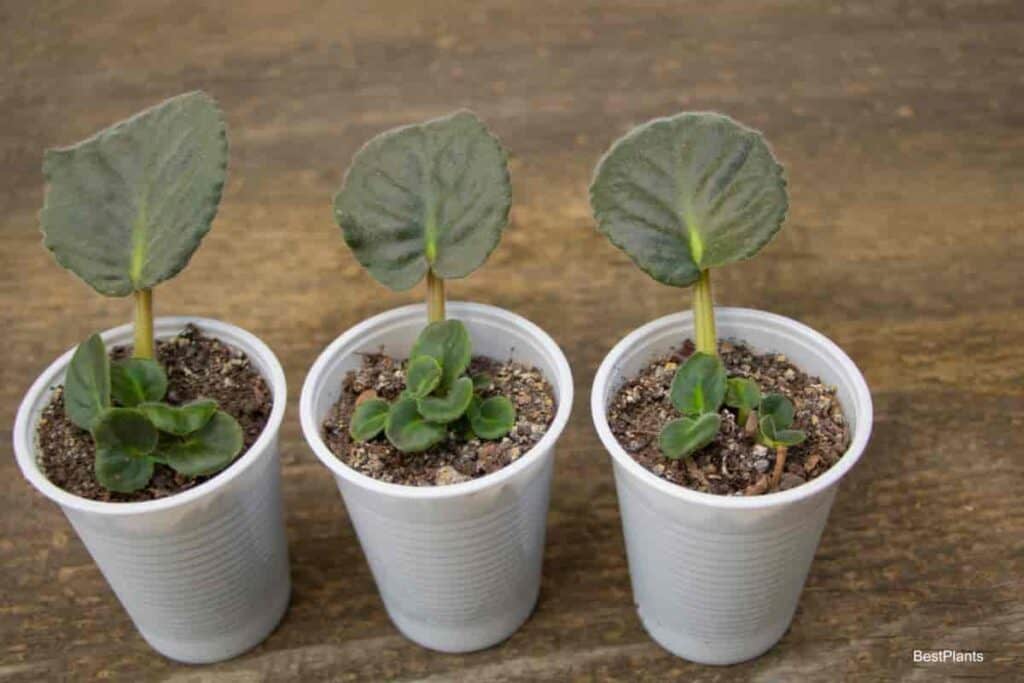Have you ever received a gift of cuttings, leaves—or some hard-to-get plant, long on your want list, only to lose them in the rooting stage? It may be a painful experience.

Over the years, I have developed a set of rules that spell success in saving cuttings and newly potted plants. Granted, an individual fails at times, but this is a rarity.
My Methods On Cuttings
Here are some of my methods for specific kinds of cuttings:
- Ivy and begonia cuttings root readily in water and should be potted as soon as roots appear.
- Oleander and hibiscus will root in water, but they are much slower than the others.
- Geraniums seem to prefer sand alone for rooting —just slightly damp. Too much moisture encourages black rot. Take cuttings of firm growth, not a succulent new development, but not the oldest on the plant either.
- Begonias, fuchsias, Kurume azaleas, and gardenias root well in a mixture of equal parts of sand and peat moss.
- Gloxinias and African violets root well for me in sand and peat moss with the addition of some humusy soil. This soil seems to give the plantlets a start and delays the need for separation and repotting until they are solid. Small plants are better able to take the shock of transplanting.
And, a good thing to know is that all cuttings and leaves of house plants root faster and easier in the spring and early summer than at other times.
I have used the word “sand” when it should be “gravel,” with the small stones screened out. River sand seems to cause a packing of the soil with resulting lack of aeration to the roots.
The small stones removed may be used as drainage material. Some gravel contains quite an amount of clay and should be washed before being used.
Propagating Containers
I use various propagating containers. A miniature plastic greenhouse, 5 1/2″ by 7 1/2″ inches; a few tiny plastic pots, plus tiny tin cans – these I prefer to small clay pots, as they do not dry out so fast.
All cuttings do equally well in these containers. For final potting, both clay and plastic pots are excellent.
Cutting Success Start With A Callus Or Seal
Success with cuttings depends on the large extent of allowing fresh cut ends to be exposed to the air for an hour or so, never to the point of the cuttings becoming limp, however. This drying period forms a callus, or seal, and helps prevent rot organisms from entering the stem.
Leaves or cuttings received through the mail should have a small portion of the stem cut off. Then allow a new callus to form before inserting them into the rooting medium.
If African violet stems are entirely broken off on arrival, they will still form plantlets. Barely insert the lower edge of the leaf in the rooting medium: place toothpicks or plastic markers on either side of the leaf to prop it up until roots form.
Limp And Wilted Cuttings
Suppose cuttings and leaves arrive in a limp and wilted condition. Two methods can prevent them from becoming crisp again with a greater assurance of their rooting.
The Bath Towel Method
- A bath towel is laid on a table or bench, dipped in warm water, and wrung almost dry.
- The limp leaves or cuttings are placed on half of it, and the other half is then carefully folded over them.
- Left for a few hours, they absorb moisture from the towel and become crisp.
- There is not enough moisture to water-soak them.
Covered Dish And Sponge
The other method is to place them in a covered dish containing a damp sponge. The cover is replaced, and the resulting humidity causes them to freshen again.
Potting Plants
Some planting instructions recommend leaving the rootball intact and merely shifting the plant to a larger pot containing fresh soil.
Some plants with a solid mass of fine roots will not get the best results. A Kurume azalea in my collection treated in this manner promptly showed its displeasure by almost dying.
The root mass was so solid that water could not penetrate it. On removing the plant from the pot, the rootball was gently pulled apart so that many roots came in contact with new soil, then watered thoroughly.
The azalea soon became covered with rich, new growth to show its appreciation.